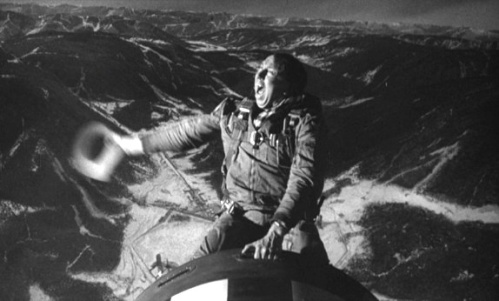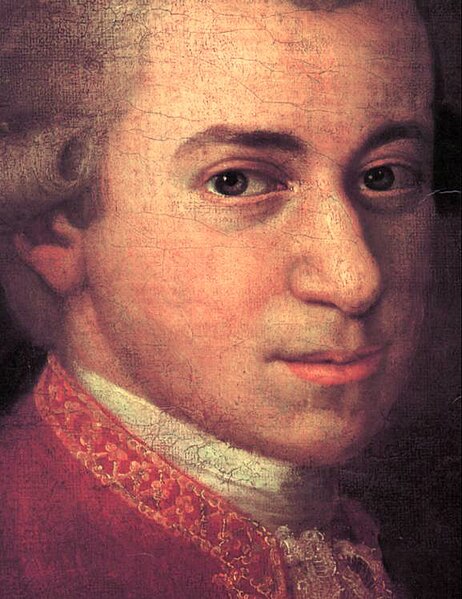So, if you have some time to spare mine the IMDb movie database for trends and patterns buried in the gazillions of movie reviews. Then, parse the results for most positive mentions for a movie for each year — since public movies began. Then post the results on Reddit. That’s what monoglot did for us a couple of weeks ago. The results show the best movies by popular consent, not by critical acclaim. But, fascinating nonetheless. My favorite, goes to the vintage year of 1964, the movie: Stanley Kubrick’s, Dr. Strangelove or: How I Learned to Stop Worrying and Love the Bomb. It’s a classic, very dark comedy, and all the more hysterical because it’s very close to the truth.
From Reddit:
| Year | Film | Top Votes | All Votes | Rating |
|---|---|---|---|---|
| 1894 | Edison Kinetoscopic Record of a Sneeze | 181 | 824 | 6.1 |
| 1895 | Employees Leaving the Lumière Factory | 449 | 2809 | 6.9 |
| 1896 | Arrival of a Train at La Ciotat | 735 | 3676 | 7.3 |
| 1897 | Leaving Jerusalem by Railway | 53 | 334 | 6.6 |
| 1898 | Four Heads Are Better Than One | 326 | 1254 | 7.7 |
| 1899 | The Kiss in the Tunnel | 51 | 505 | 5.9 |
| 1900 | The One-Man Band | 82 | 1021 | 7.1 |
| 1901 | The India Rubber Head | 91 | 1133 | 7.2 |
| 1902 | A Trip to the Moon | 7563 | 17189 | 8.2 |
| 1903 | The Great Train Robbery | 1403 | 7795 | 7.4 |
| 1904 | An Impossible Voyage | 388 | 1615 | 7.7 |
| 1905 | Le diable noir | 163 | 1016 | 7.2 |
| 1906 | Dream of a Rarebit Fiend | 93 | 931 | 6.8 |
| 1907 | Ben Hur | 101 | 336 | 5.7 |
| 1908 | Fantasmagorie | 102 | 1015 | 7.0 |
| 1909 | The Devilish Tenant | 159 | 661 | 7.5 |
| 1910 | Frankenstein | 144 | 1805 | 6.6 |
| 1911 | Winsor McCay, the Famous Cartoonist of the N.Y. Herald and His Moving Comics | 155 | 860 | 7.3 |
| 1912 | The Revenge of a Kinematograph Cameraman | 400 | 1332 | 7.9 |
| 1913 | Fantomas | 111 | 1110 | 6.8 |
| 1914 | Tillie’s Punctured Romance | 892 | 2230 | 7.4 |
| 1915 | The Birth of a Nation | 4121 | 13736 | 6.9 |
| 1916 | Intolerance | 3280 | 8632 | 8.1 |
| 1917 | The Immigrant | 966 | 3715 | 7.8 |
| 1918 | A Dog’s Life | 860 | 3307 | 7.8 |
| 1919 | Broken Blossoms | 2089 | 5804 | 7.7 |
| 1920 | The Cabinet of Dr. Caligari | 13131 | 28545 | 8.1 |
| 1921 | The Kid | 18501 | 40219 | 8.4 |
| 1922 | Nosferatu | 21126 | 55596 | 8.0 |
| 1923 | Safety Last! | 4569 | 9933 | 8.3 |
| 1924 | Sherlock Jr. | 7707 | 16754 | 8.3 |
| 1925 | The Gold Rush | 20720 | 45044 | 8.3 |
| 1926 | The General | 17175 | 37337 | 8.3 |
| 1927 | Metropolis | 37077 | 80602 | 8.4 |
| 1928 | The Passion of Joan of Arc | 9826 | 19651 | 8.3 |
| 1929 | Un chien andalou | 9507 | 25019 | 7.9 |
| 1930 | All Quiet on the Western Front | 18611 | 40458 | 8.1 |
| 1931 | City Lights | 38960 | 69572 | 8.7 |
| 1932 | Freaks | 7740 | 25801 | 8.0 |
| 1933 | King Kong | 21296 | 56042 | 8.0 |
| 1934 | It Happened One Night | 21284 | 46270 | 8.3 |
| 1935 | Bride of Frankenstein | 9697 | 25518 | 7.9 |
| 1936 | Modern Times | 50487 | 90156 | 8.6 |
| 1937 | Snow White and the Seven Dwarfs | 25843 | 92297 | 7.7 |
| 1938 | Bringing Up Baby | 14224 | 37432 | 8.1 |
| 1939 | The Wizard of Oz | 79226 | 208490 | 8.2 |
| 1940 | The Great Dictator | 40192 | 87374 | 8.5 |
| 1941 | Citizen Kane | 127586 | 227833 | 8.5 |
| 1942 | Casablanca | 165578 | 295675 | 8.6 |
| 1943 | Shadow of a Doubt | 10359 | 36995 | 8.0 |
| 1944 | Double Indemnity | 32626 | 70925 | 8.5 |
| 1945 | Brief Encounter | 9876 | 21469 | 8.1 |
| 1946 | It’s a Wonderful Life | 114199 | 196894 | 8.7 |
| 1947 | Miracle on 34th Street | 9205 | 24223 | 7.9 |
| 1948 | Bicycle Thieves | 29153 | 63377 | 8.4 |
| 1949 | The Third Man | 39394 | 85640 | 8.4 |
| 1950 | Sunset Blvd. | 54848 | 101571 | 8.6 |
| 1951 | A Streetcar Named Desire | 29419 | 63954 | 8.1 |
| 1952 | Singin’ in the Rain | 58094 | 107582 | 8.4 |
| 1953 | Roman Holiday | 31896 | 69340 | 8.1 |
| 1954 | Seven Samurai | 113482 | 171942 | 8.8 |
| 1955 | The Night of the Hunter | 21862 | 47527 | 8.1 |
| 1956 | The Searchers | 19109 | 50286 | 8.0 |
| 1957 | 12 Angry Men | 192641 | 291880 | 8.9 |
| 1958 | Vertigo | 80687 | 175406 | 8.5 |
| 1959 | North by Northwest | 76067 | 165364 | 8.5 |
| 1960 | Psycho | 135723 | 295051 | 8.6 |
| 1961 | Breakfast at Tiffany’s | 25338 | 90494 | 7.8 |
| 1962 | Lawrence of Arabia | 75643 | 140080 | 8.4 |
| 1963 | The Great Escape | 54982 | 119526 | 8.3 |
| 1964 | Dr. Strangelove | 146779 | 262105 | 8.6 |
| 1965 | For a Few Dollars More | 45628 | 103701 | 8.4 |
| 1966 | The Good, the Bad and the Ugly | 233024 | 353066 | 9.0 |
| 1967 | The Graduate | 61087 | 160755 | 8.1 |
| 1968 | 2001: A Space Odyssey | 164849 | 294374 | 8.3 |
| 1969 | Butch Cassidy and the Sundance Kid | 39801 | 110558 | 8.2 |
| 1970 | Patton | 29139 | 63345 | 8.1 |
| 1971 | A Clockwork Orange | 208014 | 385212 | 8.4 |
| 1972 | The Godfather | 604775 | 817264 | 9.2 |
| 1973 | The Exorcist | 87140 | 229317 | 8.0 |
| 1974 | The Godfather: Part II | 355223 | 538216 | 9.1 |
| 1975 | One Flew Over the Cuckoo’s Nest | 313325 | 489570 | 8.8 |
| 1976 | Taxi Driver | 160636 | 349209 | 8.4 |
| 1977 | Star Wars | 364912 | 629158 | 8.7 |
| 1978 | The Deer Hunter | 79985 | 173881 | 8.2 |
| 1979 | Alien | 179377 | 389950 | 8.5 |
| 1980 | The Empire Strikes Back | 325241 | 560760 | 8.8 |
| 1981 | Raiders of the Lost Ark | 217026 | 471795 | 8.6 |
| 1982 | Blade Runner | 160519 | 348955 | 8.3 |
| 1983 | Return of the Jedi | 203856 | 443166 | 8.4 |
| 1984 | The Terminator | 148056 | 411266 | 8.1 |
| 1985 | Back to the Future | 218885 | 475838 | 8.5 |
| 1986 | Aliens | 162067 | 352320 | 8.5 |
| 1987 | Full Metal Jacket | 126512 | 332925 | 8.4 |
| 1988 | Die Hard | 154758 | 429882 | 8.3 |
| 1989 | Indiana Jones and the Last Crusade | 159712 | 362981 | 8.3 |
| 1990 | Goodfellas | 327955 | 512429 | 8.8 |
| 1991 | The Silence of the Lambs | 313522 | 580596 | 8.6 |
| 1992 | Reservoir Dogs | 208201 | 452611 | 8.4 |
| 1993 | Schindler’s List | 345845 | 596284 | 8.9 |
| 1994 | The Shawshank Redemption | 870630 | 1176527 | 9.3 |
| 1995 | Se7en | 371390 | 687759 | 8.7 |
| 1996 | Trainspotting | 130009 | 342128 | 8.2 |
| 1997 | Titanic | 213075 | 560724 | 7.7 |
| 1998 | Saving Private Ryan | 322571 | 597354 | 8.6 |
| 1999 | Fight Club | 519243 | 895246 | 8.9 |
| 2000 | Memento | 325477 | 602735 | 8.6 |
| 2001 | The Fellowship of the Ring | 572464 | 867369 | 8.9 |
| 2002 | The Two Towers | 438736 | 756441 | 8.8 |
| 2003 | The Return of the King | 554928 | 840800 | 8.9 |
| 2004 | Eternal Sunshine of the Spotless Mind | 217921 | 473742 | 8.4 |
| 2005 | Batman Begins | 302015 | 656554 | 8.3 |
| 2006 | The Departed | 321600 | 595555 | 8.5 |
| 2007 | No Country for Old Men | 198718 | 431995 | 8.2 |
| 2008 | The Dark Knight | 753903 | 1142277 | 9.0 |
| 2009 | Inglourious Basterds | 256945 | 558576 | 8.3 |
| 2010 | Inception | 618118 | 936543 | 8.8 |
| 2011 | Intouchables | 181019 | 282842 | 8.6 |
| 2012 | The Dark Knight Rises | 437472 | 754262 | 8.6 |
| 2013 | Gravity | 151512 | 329373 | 8.2 |
| 2014 | The Lego Movie | 25934 | 48025 | 8.4 |
Read the entire post here.
Image: Slim Pickens as Major T.J. “King” Kong riding a nuclear bomb to oblivion, from the movie Dr.Strangelove. Courtesy of Wikipedia.


 Do you prefer the Beatles to Beethoven? Do you prefer Rembrandt over the Sunday comics or the latest Marvel? Do you read Patterson or Proust? Gary Gutting professor of philosophy argues that the distinguishing value of aesthetics must drive us to appreciate fine art over popular work. So, you had better dust off those volumes of Shakespeare.
Do you prefer the Beatles to Beethoven? Do you prefer Rembrandt over the Sunday comics or the latest Marvel? Do you read Patterson or Proust? Gary Gutting professor of philosophy argues that the distinguishing value of aesthetics must drive us to appreciate fine art over popular work. So, you had better dust off those volumes of Shakespeare.